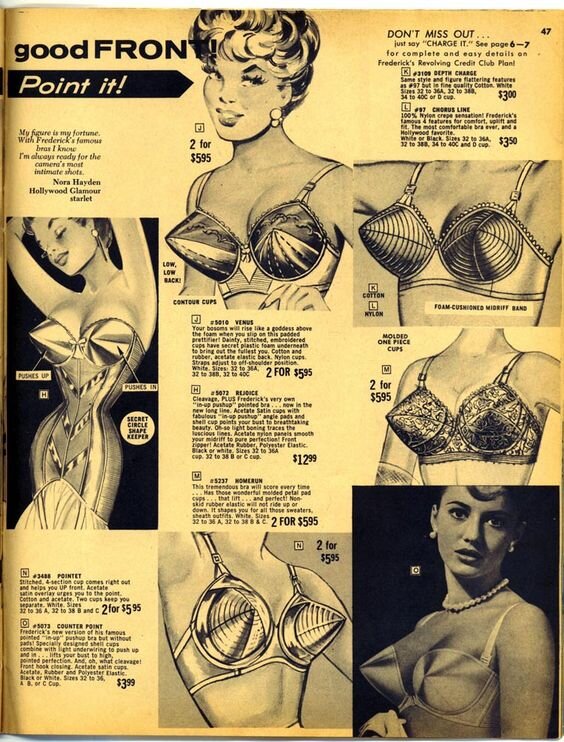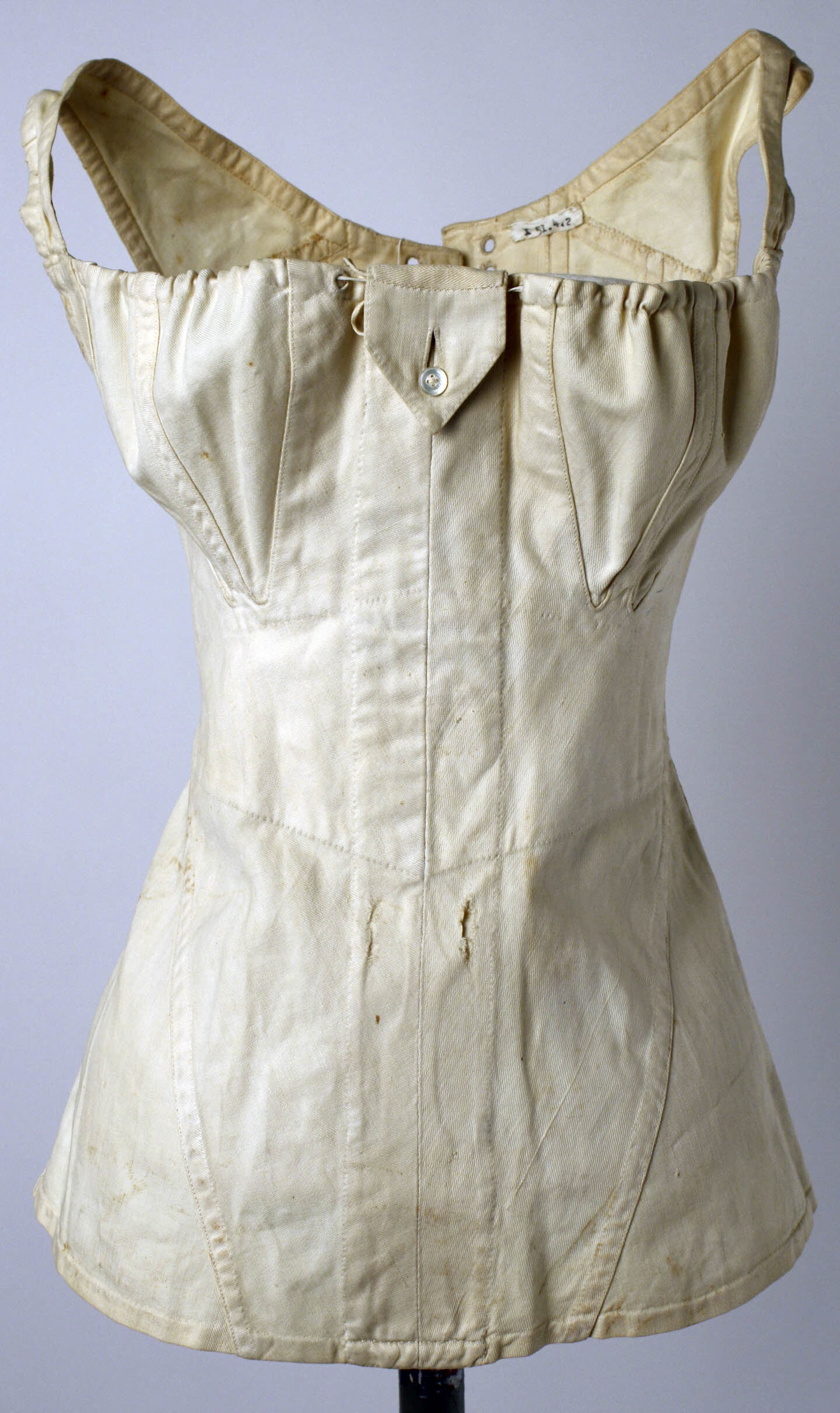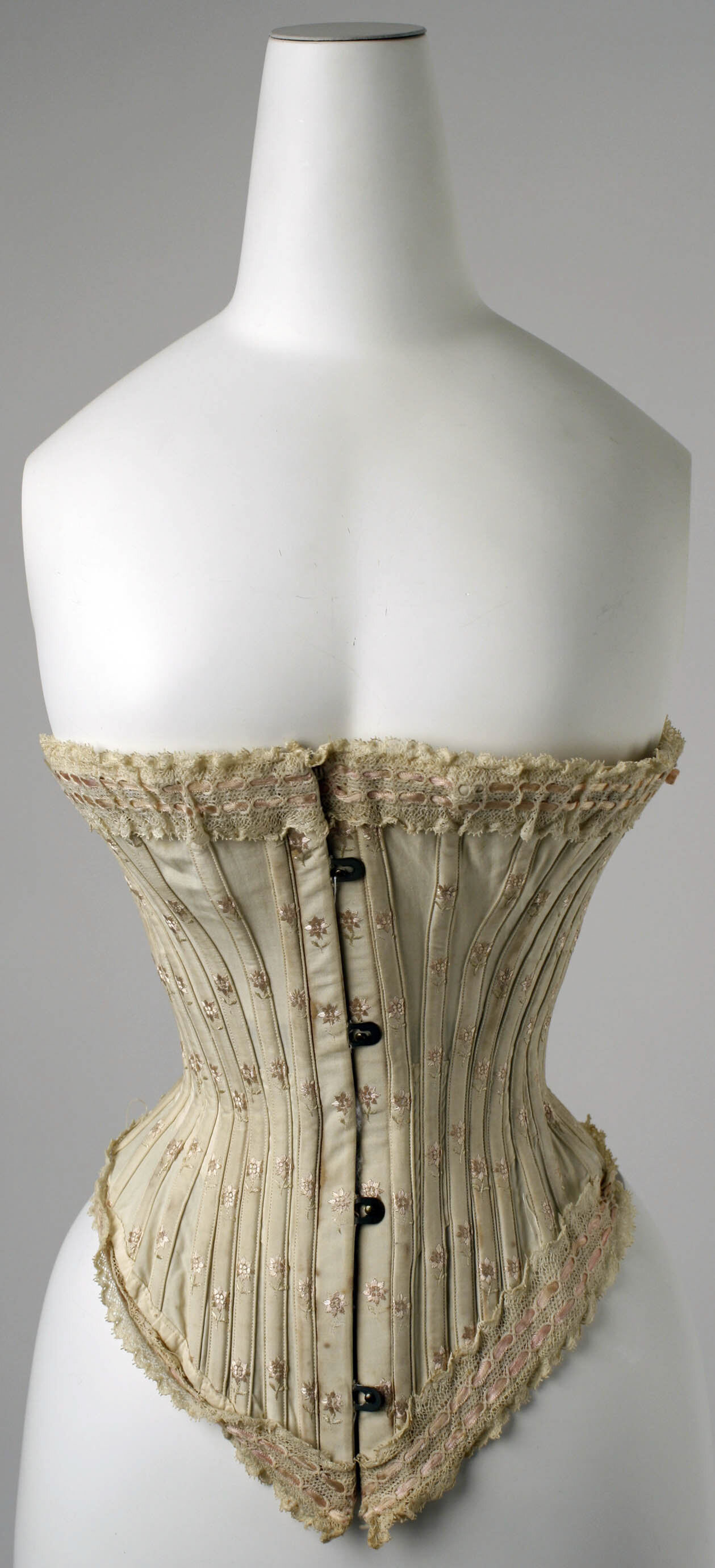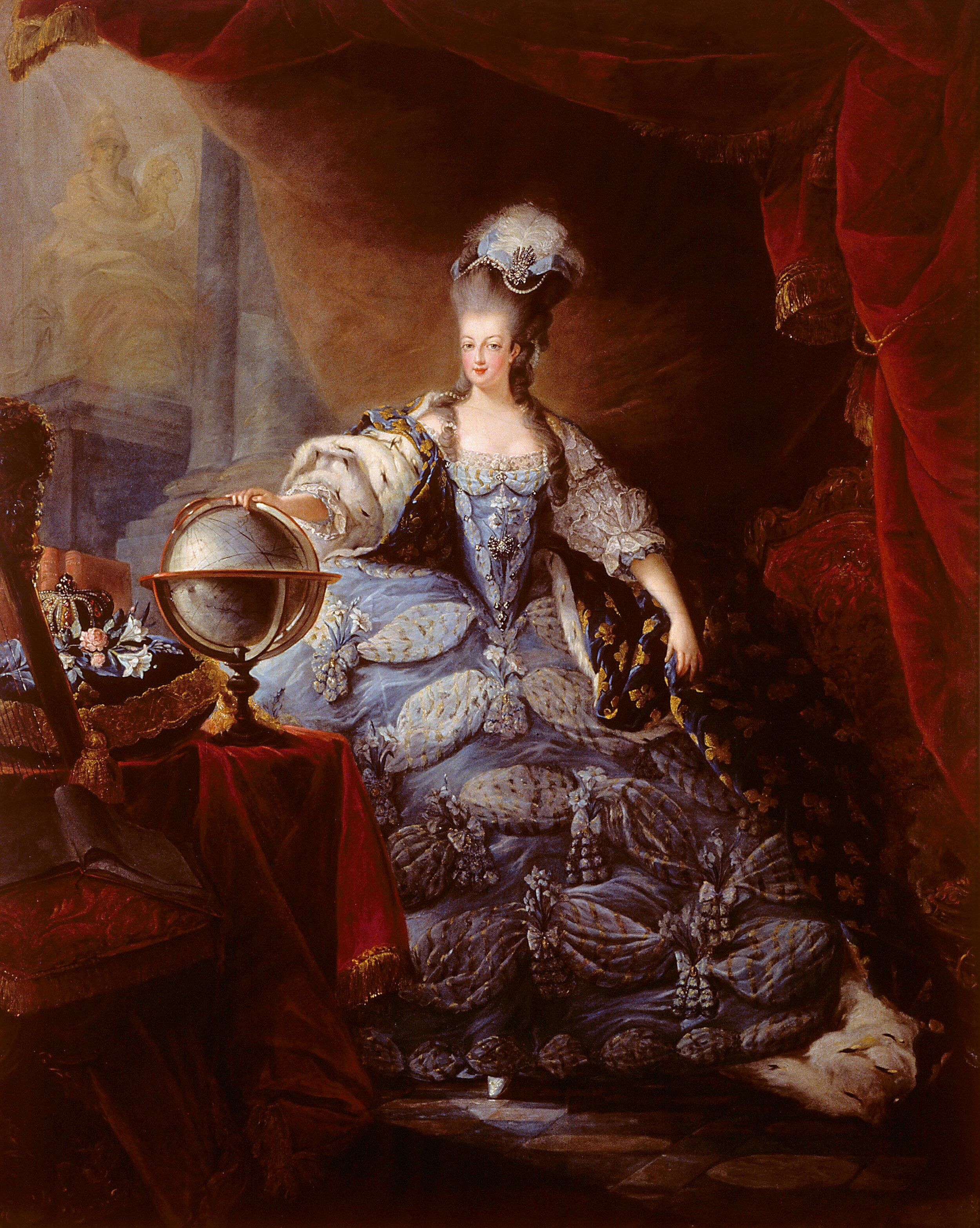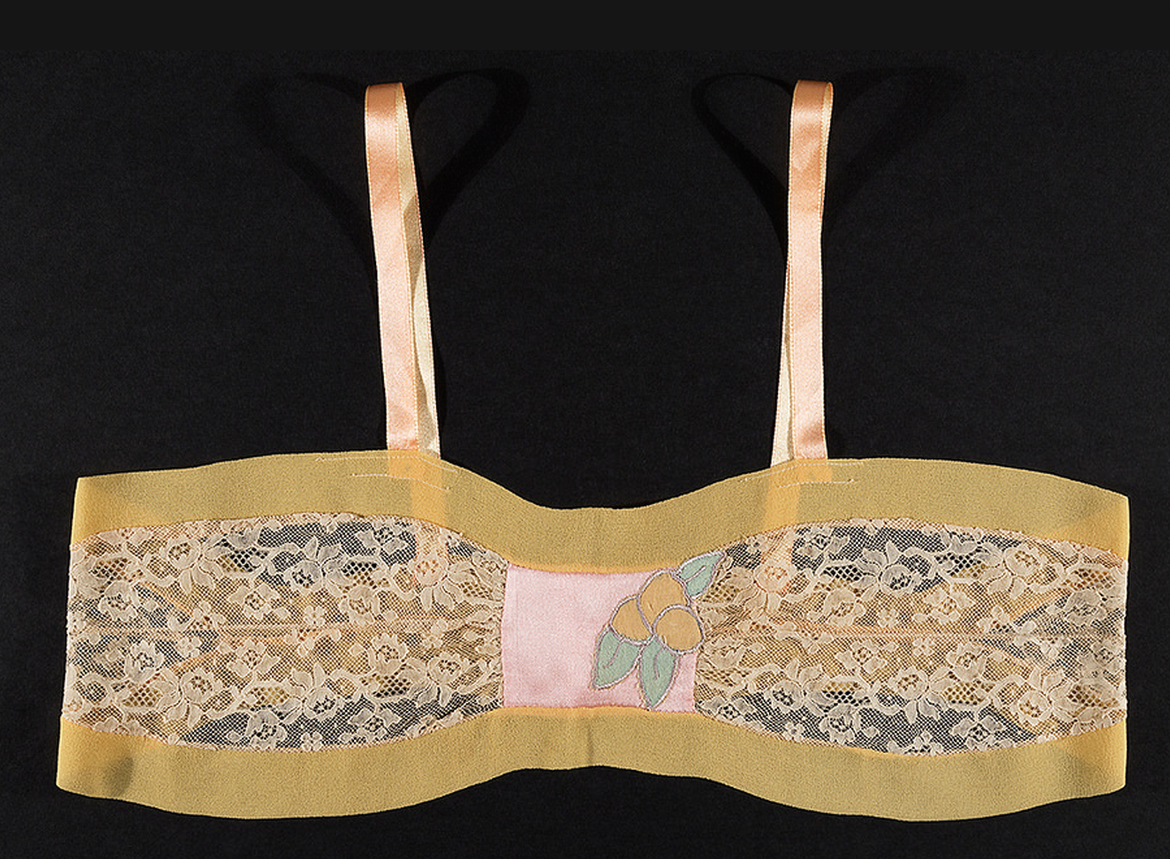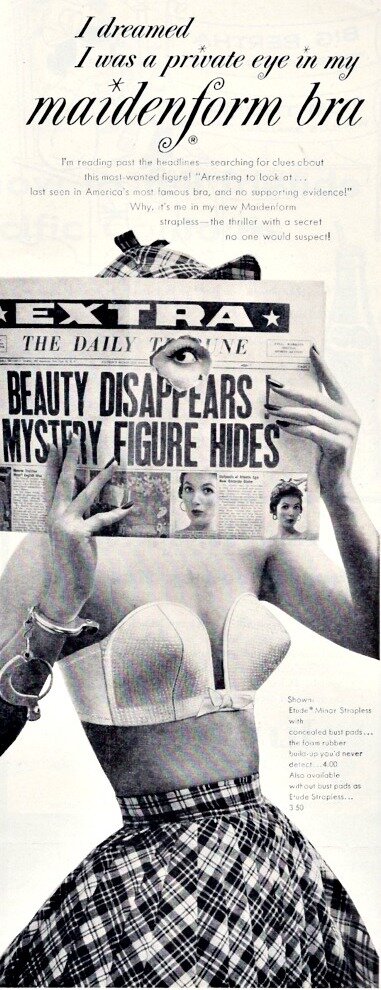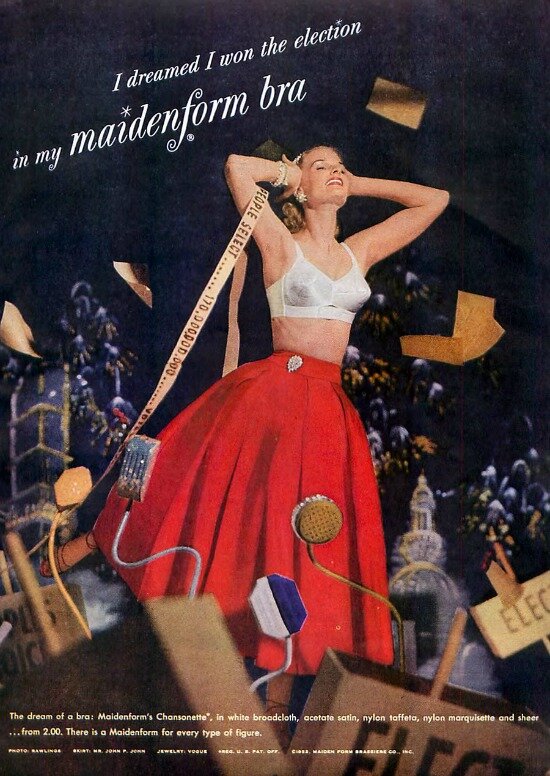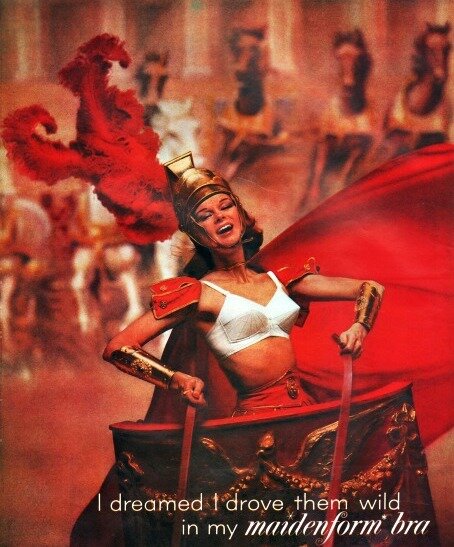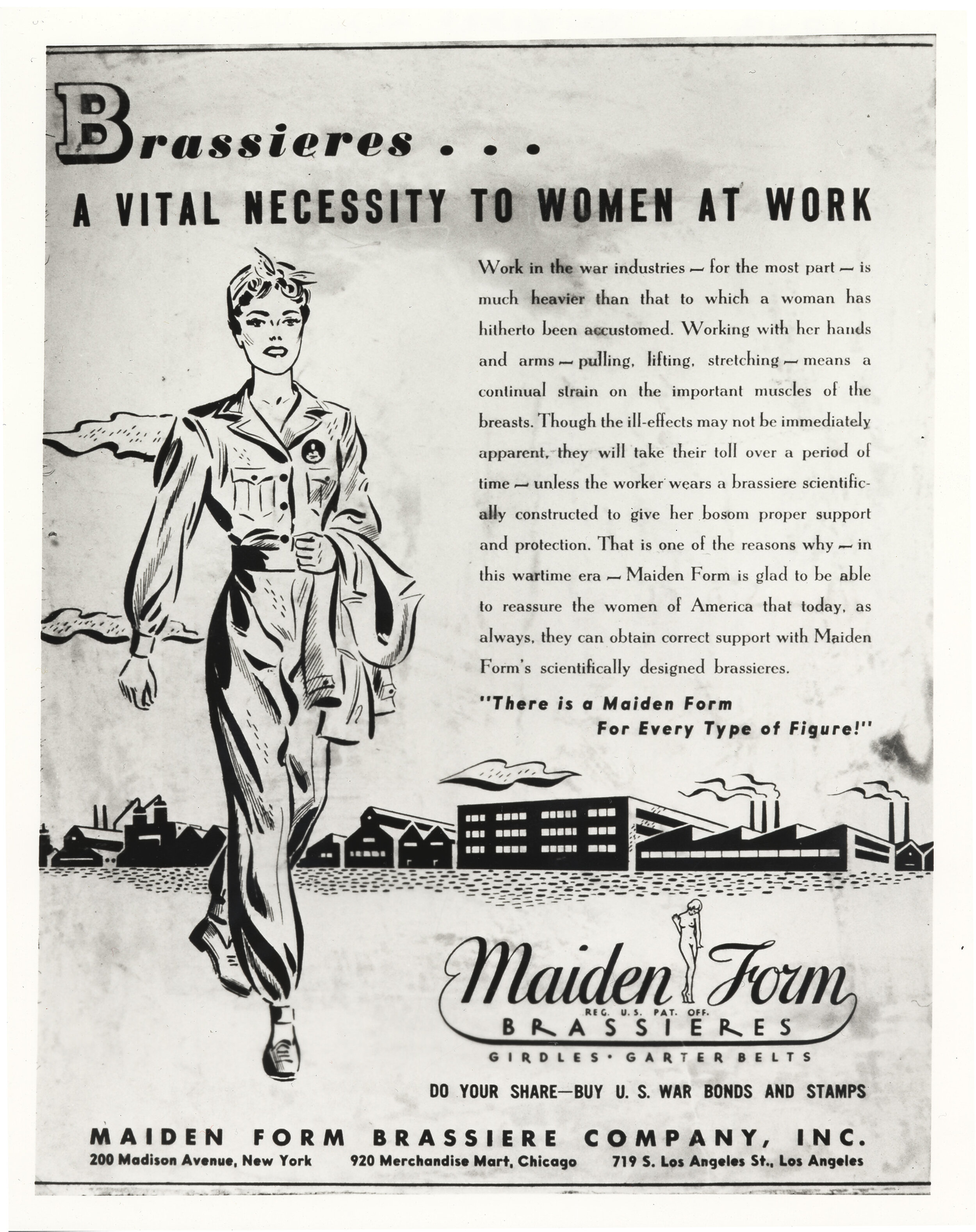Shaping the Ladies: A Brief History of the Bra
It’s an experience shared by many: it’s the end of the day and you’re peeling off whatever bra you’ve just spent many hours in, breathing a little sigh of relief. That garment you’ve just tossed onto the floor isn’t one we often give a lot of thought to, unless it’s not doing what we want it to do. But it’s been a staple of most women’s wardrobes for centuries, supporting breasts, hiding and exposing them, shaping the silhouette we wear into the world.
We have this notion that bras and corsets were invented by men to confine women - to keep them from moving freely, bound up tightly for the viewer’s pleasure. But they appear throughout time because they’re also about practicality, and freeing women to do the things they want to do. If you have breasts, dear listener, you know the incredible discomfort of, say, riding a horse at full speed or doing jumping jacks with no bra on. If you don’t have breasts, imagine two balloons full of sand and maybe pudding, strapped to your chest. A friend, who is much more generously endowed than I am, recently went on a bike ride through the rain while braless, and described to me the incredible discomfort of, as she put it, her “sweet chariots hanging low.”
Love or hate them, bras have always been with us, and they have a long and deliciously interesting history. You can discover a LOT about women in history just by tracing how our necklines rise and fall, how much cleavage we’re showing, and how the most desirable breast shape changes. So let’s head out on an expedition through time to explore the evolution of our sweet chariot holders and all the shapes they’ve taken over time.
I’m also going to take this opportunity to introduce you to some glorious historical terms for our bosoms, because who doesn’t love a bit of time traveling slang, amiright? I’ll earmark them with the year they first appear in written sources according to Green’s Dictionary of Slang. You’re welcome.
Bras have been shaping our silhouettes for a very, very long time.
my sources
books
The Cramoisy Queen: A Life of Caresse Crosby by Linda Hamalian.
Fashion in Underwear: From Babylon to Bikini Briefs by Elizabeth Ewing.
podcasts
For more on ancient bras of the western world, see my episodes on life for women in Ancient Greece and Rome.
If you’re into fashion history (or just, you know, history) then you HAVE to go and listen to Dressed. They often do spotlights on a specific type of clothing and have several great episodes on things related to the bra.
online
“Q&A: Archaeologist Unearths 600-year-old Bra in Castle.” Emily Spivak, Smithsonian Magazine, July 23, 2012.
“100 Years of Brassieres: The Historical Evolution of the Bra.” Inside Hook, April 26, 2018.
“Bra History: How A War Shortage Reshaped Modern Shapewear.” Melissa Pandika, NPR, August 5, 2014
“The True History of the Ultimate Wardrobe Essential—Your Bra.” Vogue, March 11, 2019.
“Strapped In: The Origins and Evolution of the Bra.” The Museum at FIT, Google Arts & Culture.
The extremely silly slang words for breasts come from Green’s Dictionary of Slang. His website is great, but you can also find a sliding timeline of breast-related slang for ease of navigation here.
“The Evolution of Cleavage ‘Ideals.’” Marlen Komar, Bustle.com, Jan. 21, 2016
“Bra Support Comes of Age: The history of the bra, 1920-1930.” Carol Wood, Finery Magazine, November 1, 2013
“How the First Sports Bra Got Its Stabilizing Start.” Allison Keyes, Smithsonian Magazine, March 18, 2020.
what’s pushing up my globes so fetchingly? read on, and you just might find out.
Mary II (1667), portrait by Peter Lely. Wikicommons.
transcript
THE BRA’S BEGINNINGS
The bra is one of those things that you can’t claim was actually “invented.” For as long as people have had breasts to contain, they’ve looked for something to strap them down. How and why they did so has everything to do with their culture, their status, and the beauty ideals of their day.
As we’ve discovered in Season 2, the bra goes all the way back to the ancient world - at least we think so. Cloth doesn’t age well, so artwork is pretty much all we have to go by. In ancient Minoan art, women are depicted with a band of cloth around their lady orbs. It’s been called an apodesmos, a woolen contraption that it seems was wrapped around the front and fastened with pins in the back. Other Minoan art shows women wearing a corset-like garment, though we’re not really clear how often these were worn and by whom. But it’s clear the ancient Greeks knew some things about constraining one’s ta tas. In Book 14 of Homer’s Iliad, he describes the goddess Aphrodite’s appearance thusly: “...she loosed from her bosom the curiously embroidered girdle into which all her charms had been wrought...” A lot of scholars refer to this as Aphrodite’s belt, but the references to letting free her golden apples make it sound much more like a bra. The Greeks also have a lot to say about the breasts of the Scythians, that term they used for the nomadic horse-riding tribes who wandered on the Eurasian Steppe. It makes sense that they’d want to bind their breasts for practicality, and there’s evidence to suggest they sometimes wore leather armor to do it. You try galloping full speed while shooting a bow and arrow without a bra on!
In Rome, women weren’t about cleavage, or playing up their breast size. Emphasizing the hips was more the thing. Vibia Sabina, Wikicommons.
In Greece, some women wore a strophion, or a simple cloth band. In Rome it was called the strophium. It’s unclear if ALL women wore them, or just certain women in certain situations, but all you have to do is look at an ancient Greek statue to know that huge jugs were not their beauty idyll. Many women wore these breastbands to keep the ladies contained, focusing attention on the curve of the hips and their potential for childbearing. And of course, just like in every era, there are men who had opinions about what women should do with them. Ovid, for one, wrote that if breasts weren’t quite the right shape, women should stuff their bras. Thanks for that super hot tip! From what the ancient sources suggest to us, respectable women were known to keep their strophium on during sexytime, which may just be because they weren’t easy to take off. They also seem to have worn them when they went for a workout. The famous Roman “bikini girls” mosaic from the Villa Romana del Casale in Sicily, dating back to the fourth century CE, shows women exercising at a gymnasium in what looks like a strapless bra and bikini briefs. Was this standard issue for women wanting to get their sweat on? We don’t know, but they were clearly a thing.
In the non-Western world, women were also looking for ways to contain the ladies. In India, the first mention of the bra dates back to writings from the 1st century CE. In ancient China there were several bra-like situations: the xieyi, a tunic-style worn in the Han Dynasty around 200 BCE, and the moxiong, a one-piece garment worn around 500 CE.
FROM WRAP TO CUPS
A lot of these are breast-binding garments, meant to strap the “ivory balls” (1600) down for a range of reasons. So when do bras as we might recognize them come onto the scene? We’re going to define the bra as something with two distinct cups for your sweet melons to rest in, and they came into existence a lot earlier than you probably think. In 2008 in Lengberg Castle, Austria, researchers found four linen bitties that date to the medieval period, between 1390 and 1485. All four of them look startlingly like the tattered remains of modern bras. A few of these proto-brassieres feature cups sewn into a cropped tank top-type garment, which rises to cover the cleavage area and would have served as an underlayer. Another looks a lot like what’s called a long-line bra in the 1950s: it has cups made from pieces of linen, with some surrounding fabric extending down to the bottom of the ribs. It has eyelets on the left side for tightening, in the same way you might lace up a corset. All have lacy decoration for a little something extra special. Turns out we’ve been combining function and fashion in our bras for a very, very long time.
The photo-brassieres found at Lengberg Castle blew the idea that two-cup bras were only a few centuries old out of the water.
Courtesy of the University of Innsbruck
We don’t know how widely such garments were worn, but we do know that men liked to write about them. You know what’s an unsexy term for a bra? “Breastbags.” Henri de Mondeville, surgeon to Philip the Fair of France and his successor Louis X, wrote the following in the 1310s: “Some women…insert two bags in their dresses, adjusted to the breasts, fitting tight, and they put them [the breasts] into them [the bags] every morning and fasten them when possible with a matching band.” While the purpose here seems to have been to strap the ladies down, another writer, Konrad Stolle, complained in the 1480s about bras that flattered the lady’s “paps” (1500) a bit too well, describing them as “all indecent”. You know what, Konrad? No one asked you. Yet another 15th-century satirical poet from Germany described so-called “breast bags” in which a woman “roams the streets, so that all the young men that look at her, can see her beautiful breasts; But whose breasts are too large, makes tight pouches, so there is no gossip in the city about her big breasts.” It seems that these bras were meant to support someone’s “globes” (1650s), but also to enhance them, depending on one’s aim and preference. Which brings us, of course, to the corset. Yup: we’re going there.
INTRODUCING THE CORSET
The corset was THE essential shaping garment for fashionable women in the western world from the Renaissance period through to the early 20th century. As with all underwear fashion, it’s hard to say when it hit the scene or who coined the term for it. In medieval times, the word “corset” was associated with a kind of cloak meant for men. Early corsets first show up in the 1300s, though in some ways they’re more about achieving the right look around the waist than about shaping our “heavers” (1670s). The medieval look demanded a long, slim waist, with a tight bodice enhanced by a low-slung, decorative belt at the hips. To get the look, women wore what was called a cotte, spelled c-o-t-t-e. This garment started out as an outerwear, worn by both men and women, over a shirt. By the sixteenth century it had become something the ladies wore underneath. This linen underbodice was described as a soft body shaper, worn over a woman’s shift, a long underslip. With time, these got stiffer and more rigid. Etymology fun fact: In modern French, the word survives in the expression cotte de mailles ("chainmail"), and the Old French ‘cote’ gave rise to the word cotillon (or "cotillion", a type of dance).
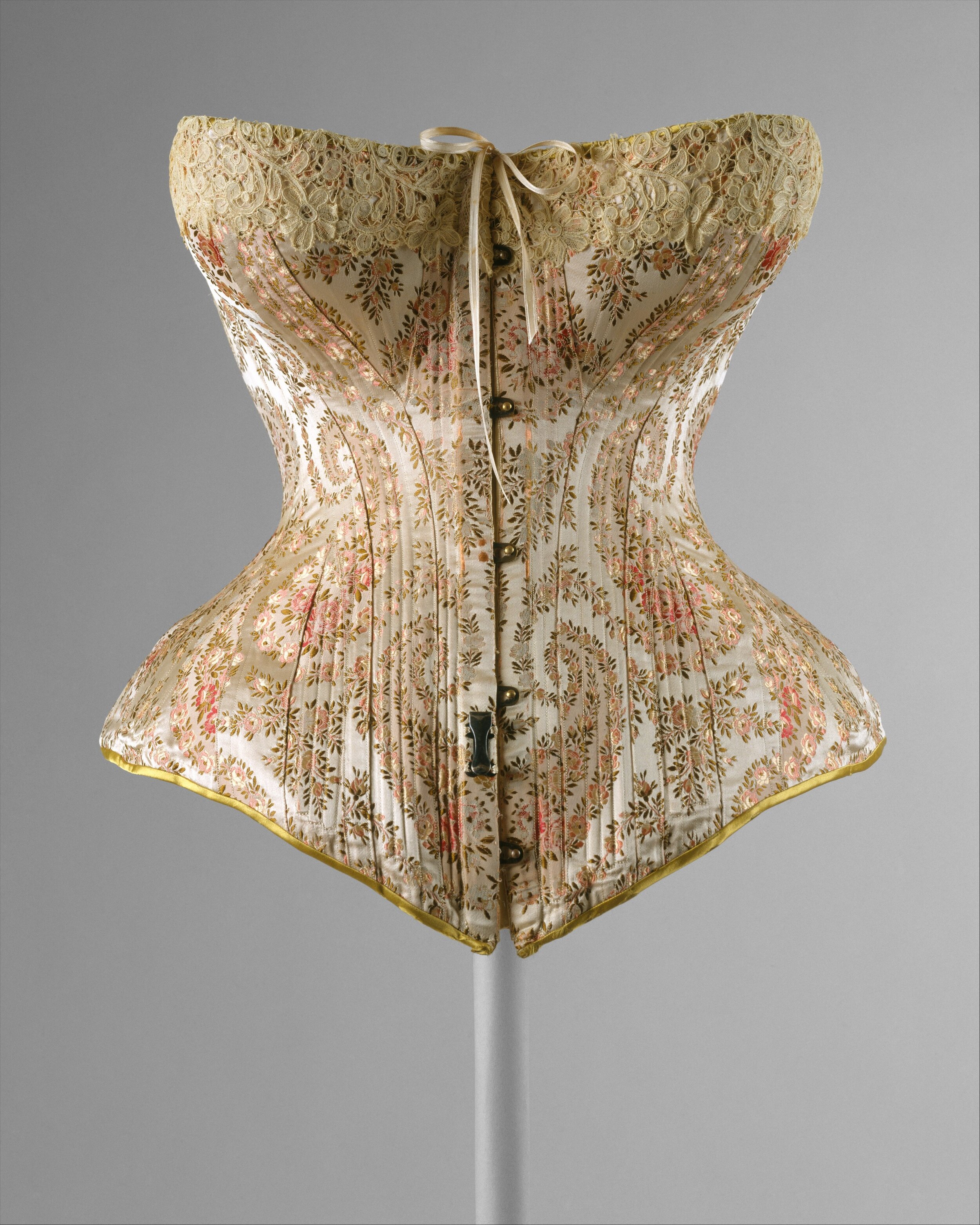
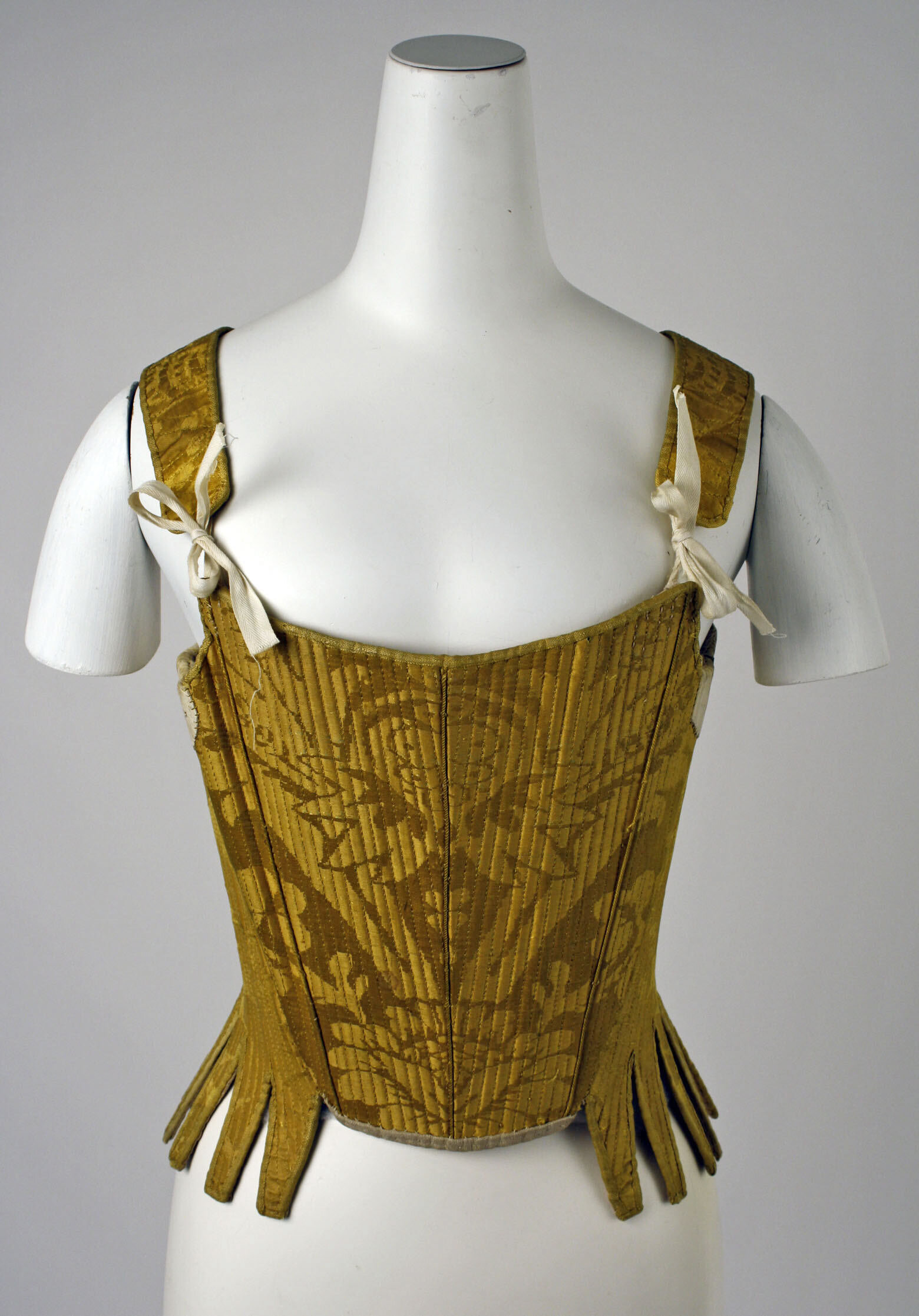
By the 15th century this all-over shaper was called a ‘body’ - probably because the thing was stiff enough to stand up on its own. By the 17th it had split into two: a ‘corps’ for the top half, run through with steel ‘stays’ to hold its shape, and a ‘cotte’ or skirt for the bottom. It’ll mostly be called our stays up until the 19th century. Some were just bodice shapers, but they had a profound effect on shaping and supporting “Cupid’s kettledrums” (1775). Well, not support like you’re thinking: these early corsets didn’t have separate cups to keep the ladies flying high. Made with whalebone and later with steel, they would mold us into an inverted cone shape, turning us all into “bushel bubbys” (1780), or a woman with large-looking breasts, giving them that ‘cup runneth over’ look popular with court ladies for several centuries. Queen Mary II of England in the 1600s, Marie Antoinette in the 1700s, and many of Europe’s most fashionable wore high-waisted neoclassical gowns that were all about the cleavage. This French-inspired style features low, square necklines that swing dangerously close to the nipples, and our stays ere what turned our exposed orbs into fetching, pushed-up half moons.
i worked hard for this cleavage: just enough, not too much.
Portrait of Marie-Antoinette by Gautier-Dagoty (1775)
But not everyone wanted to expose their “cat’s heads” (1811) for public consumption. Whatever period films like the Tudors might try to tell you, ladies aren’t generally wandering around in a corset without something underneath. Many women in these eras covered up their cleavage with things like the fichu, an often-linen cloth wrapped around the neck and tucked into the bodice for modesty’s sake. Those who didn’t got more and more hate from male critics. There’s a fine line, it seems, between fashion boldness and looking like a common harlot, which is OF COURSE a bad thing. Eye roll. Several publications in 1700s England advised against women “unmasking their beauties” because, as one put it, “otherwise polite, genteel women looked like common prostitutes.”
By this time, many were questioning the corset for its potentially damaging effects on a woman’s health. Suffragettes in the Victorian era were convinced that the corset was keeping women from legal emancipation; and besides, how was one to ride the new-fangled bicycle with their ribs so constrained? But the controversial history of the corset is a rabbit hole best left to another minisode, so let’s get to how it turned into the modern bra.
THE BRASSIERE IS BORN
As styles changed, moving toward the S-bend silhouette that got popular around the turn of the 20th century, corsets shifted with them, becoming more about shaping the torso and less about giving bust support. So people started looking for new ways to keep their bosom from looking like what the Australians once called a drooping “bag of snakes” (1910). Patents for boob-only undergarments actually go as far back as the 1860s. In 1863, a guy named Luman L. Chapman patented one with fabric “breast puffs,” elastic straps, and whalebone underwire. He tried to eliminate chafing so it could be “worn by all females at all times without either inconvenience or injury.” In 1889, a French lady named Herminie Cadolle presented her corselet gorge, or “corset divided in two,” at a Paris fashion show. The bottom piece was a tube that hugged the body, while the top piece was meant to hold up one’s “knockers” (1930). Over the next few years, Cadolle refined her invention, showing it off for the first time at the Great Exhibition in 1889. It was called a soutien-gorge by then, which literally translates to “throat support,” and was being sold separately from the corset. This is where the bra as we know it took shape.
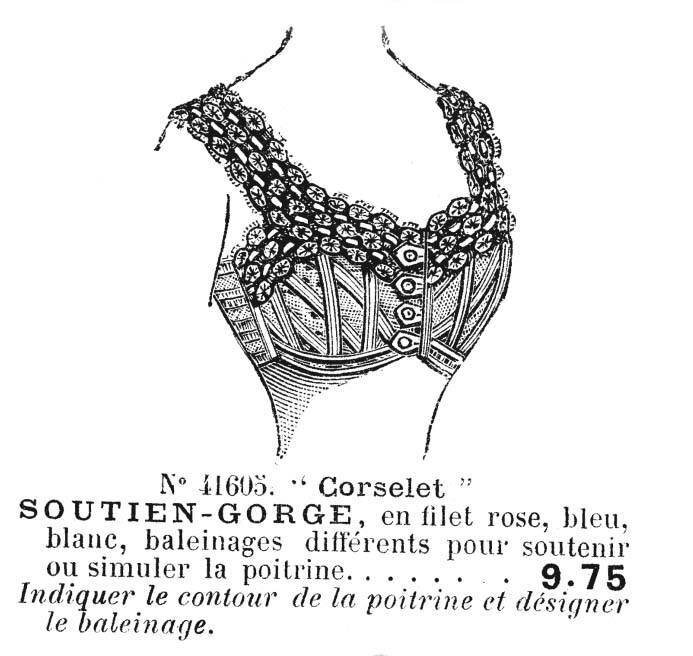
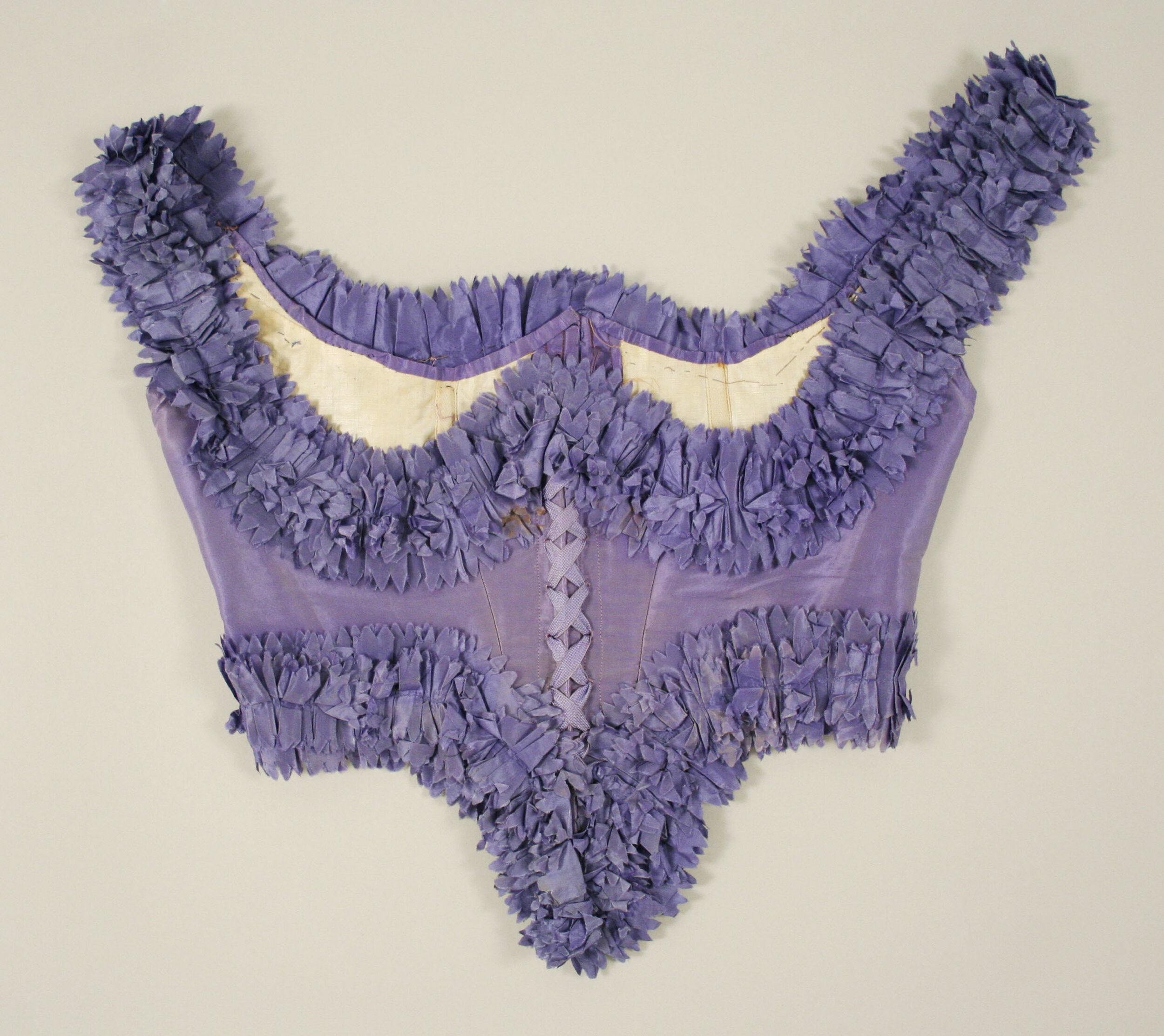
This is also when we start seeing it called a “brassiere.” Here’s an excerpt from New York’s Evening Herald from 1893: “...those ladies who wish to be in the real absolute fashion are adopting for evening wear the six inch straight boned band or brassiere which Sarah Bernhardt made a necessity with her directoire gowns.” The word comes from the French for "upper arm." Originally, it seems, it was used to describe a soldier’s arm guard or shield, and then a military breastplate. But it started showing up as a term for women’s undies in the early 1900s. By 1911, it’s in the Oxford English Dictionary. But it wasn’t until 1914, when the United States Patent and Trademark Office granted Mary Phelps Jacob a patent, that we officially got an invention called a "brassiere."
In 1913, on the eve of her debutante ball in Manhattan, a 19-year-old Mary was dealing with a wardrobe malfunction. The fashionable dresses of her era were slim, tight and boxy, with low-cut necklines. For a well-hung lady like Mary, this was a problem when it came to looking fly. That night, her sheer gown was being ruined by her bulky corset. "The eyelet embroidery of my corset-cover kept peeping through the roses around my bosom," she wrote later. So she asked her maid to bring her two pocket handkerchiefs and some pink ribbon, and they got down to sewing. What they made was quite simple: two thin pieces of material stitched in such a way that they created subtle cups. When the ribbons were pulled tight and tied together, you had something very much like a halter top bikini, and a level of support not altogether different than what a corset would offer, but without the breath-crushing whale boning. She said the feeling of wearing it was "delicious. I could move more freely, a nearly naked feeling, and in the glass I saw that I was flat and proper." The other ladies at the party that night were amazed: I’ll have what she’s having! So she went on to show her contraption around to friends and in Manhattan dressing rooms, playing around with different versions. On February 12, 1914, she filed for a patent. Nine months later, her “backless brassiere” was born.
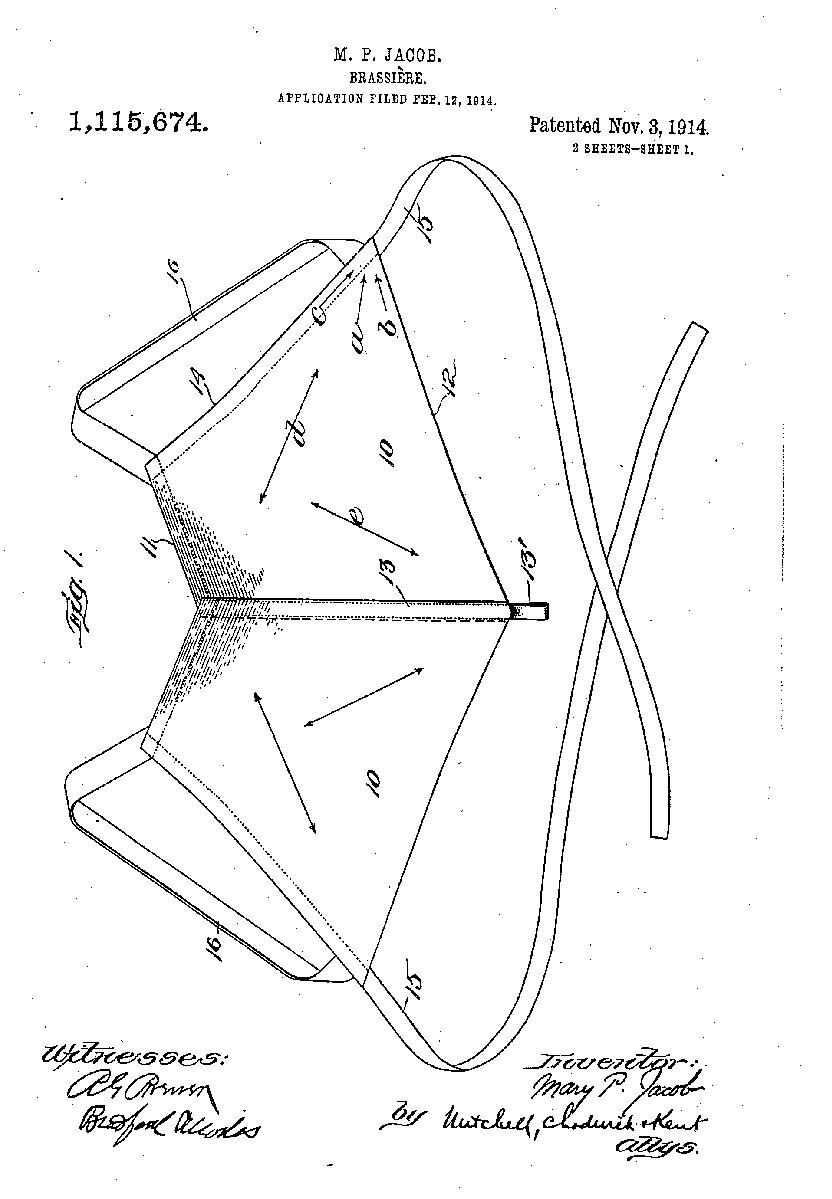
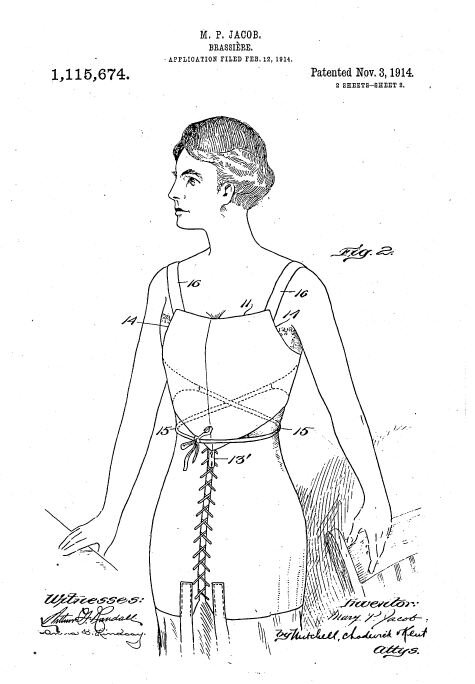
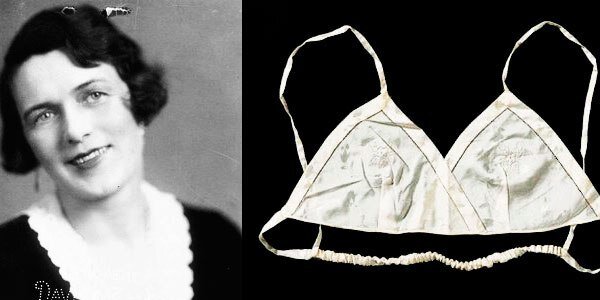
Of course, corsets had been around for so long at that point that they weren’t going to be easy to get rid of. Mary - who would later change her name to the much more fabulous Caresse Crosby - did get a few department store buyers, but it was slow going. “I can’t say the brassiere will ever take as great a place in history as the steamboat,” Mary said later, “but I did invent it.” In a very stupid man move, her husband--whose name is Dick, because of course it is--pressured her to sell the patent to the Warner Brothers Corset Co. for $1,500. Not a small sum at the time, but I’ll bet he was sorry about it later. Because lucky for the people who owned that patent, America was about to enter World War I.
THE WAR ON CORSETS AND THE RISE OF THE FLAPPER
In 1917, the U.S. War Industries Board said, ‘ladies, we’re entering a war here. Could you kindly stop buying steel-banded corsets?’ This had two consequences: first, it physically freed women up to work in factories without being so constricted, making jobs like bomb assembly much easier. It also freed up America’s steel supply for the war effort. How much steel, you wonder? Some 28,000 pounds of it, which was apparently enough to build two whole battleships. Unsurprisingly, when the war was over, no one was super keen to put the corset back on.
Times were changing for women. They’d won the right to vote, had increased access to education, and way more opportunities to work and play outside the home. They played sports, too, tennis being by far the most popular. And they wanted simple clothes to match their changing lifestyles - lighter, cheaper to make, easier to move in. They wanted to free their waists and ribs, but they still wanted something to keep their “dairy arrangements” (1923) from swinging in the breeze as they pranced.
A 1920s bra, thin and ready to squash.
From the exhibition Exposed: A History of Lingerie at the Museum at FIT.
In fashion, the tubular “la garçonne” look dominated the decade. This look, which we associate with the “flapper,” is all about a dropped waist and a slim, columnar, almost boyish silhouette. To pull it off, you couldn’t have cleavage or curves of any description. To that aim, some ladies bound their “honeydews” (1920) in strips of old sheets to try and strap them down. It’s no surprise, then, that there was room in the market for a bra that squashed. Nearly 200 patents for bras and corselettes were registered from 1918 and 1929. And while I’ve heard people grumble that bras were designed mostly by men as a means of torturing women into submission, women have often been the driving force behind them. Many were bandeau-style bras, meant to flatten you down and keep any cleavage hidden. They’re quite cute, actually, and fairly easy to make from home in a pinch. New-fangled rayon made them look more luxurious, but kept them affordable, while wash-resistant dyes meant the colors wouldn’t run.
BOOBS GET SIZED UP
But not everyone was happy with the flat-chest situation. Dressmakers Enid Bissett and Ida and William Rosenthal all thought it unflattering. So Bisette got to work making something that would better accentuate a lady’s assets, creating something with two distinct and supportive cups. William Rosenthal refined it, and the Maiden Form Brassiere was born. At first they sewed it into their dresses, but then ladies started asking for it to be sold separately. By 1929, the three had closed their shop and formed the Maiden Form Brassiere Co. They’re also credited with giving us cup sizes. At first, bras were one size fits all, made out of a stretchy material that was supposed to work for everyone, but then came A, B, C, and D cups. To me, this sounds very much like the American grading system, but apparently they represent ounces: A-cup is 8oz.; B is 13 oz., C is 21 oz., and D cups is 27 oz. Bras and yoghurt containers have more in common than I thought: who knew? Some say Maidenform brought us this sizing system, while others say it was S.H. Camp and Company. Either way, they were here to stay.
Bras really came into their own in the 1930s. Besides distinct cup sizes for better fit, there was the adjustable elastic strap and the introduction of eye hooks. The bra became less about squashing breasts down and more about making them shapely. Underwire became more common, much to my sadness, though they didn’t really take off until after World War II, when metal was no longer needed for the war effort. Who knew that the world wars had such a profound effect on our shapewear? Some had wire arching over the breasts, which helped keep their shape while getting rid of all cleavage - a good thing for mid-century ladies wearing evening dresses with plunging fronts, apparently. When it comes to sex symbols in America, suddenly it’s all about “butter babies” (1980): a slang term for a full-figured women. Now that boobs are back in fashion, the shape and material of our bras made a big difference.
CONE BRAS STEP INTO THE SPOTLIGHT
And then, in the 1940s, Hollywood got involved. Aviator, playboy, and all-around weirdo Howard Hughes designed an aerodynamic bra for Jane Russell to wear in his 1941 film The Outlaw. He called it the Cantilever Bra, and he was very precise about its purpose, saying that "the length of the actual cleavage is five and one-quarter inches.” Getting a little too involved there, Howard! In that same decade, Frederick Mellinger started Frederick’s of Hollywood, which catered mostly to the starlets who so often set our fashion trends. He came up with the first front-hook bra and the "Rising Star," a padded pushup full of so-called “cheaters” (1949) to make the most of what we got. These bras weren’t just about function: far from it. They helped usher in the era of the so-called Bullet Bra or Torpedo Bra - you know, that pointy pyramidal cup shape that defined much of the 1950s and into the ‘60s, though they got their start in the 1940s. I’ve found sources that say they became popular not because of Hollywood alone, but because women started working on production lines during World War II. Some even claimed these points offered “extra protection” in the workplace…really? Some required their workers to wear them as part of their uniform, it seems, or for the purpose of “keeping up morale.” Um, excuse me? I don’t know about that, but I DO know that Maidenform applied to the government during the war for a “Declaration of Essentiality,” arguing that America’s newly-working women needed bras, and therefore they should be able to keep making them. They marketed brassiere as a “vital necessity.”
“Brassieres…a vital necessity”
NMAH Archives Center, Maidenform Collection 0585 Box 51 Folder 10 Photo of Maidenform tearsheet that appeared in 1/14/1943 Women’s Wear Daily.
But it was movie stars who turned the bullet bra into a fashion staple. Google the words “Marilyn Monroe Wears Tight Sweater” and you’ll see what I mean. All the leading ladies of the time were wearing them, turning their “hooters” (1952) into unmissable pyramids. Madonna brought the pointy bra back into our consciousness with her Gaultier-designed cone bra on her Blonde Ambition tour in 1990. And the Wonderbra was invented in the 1960s, though it took several decades to really catch on. But the hippies of the ‘60s weren’t down with boob shapers. They became rather famous for not wearing any. In 1965, designer Rudi Gernreich took the trend for softer undies and invented his “no bra” bra. Made from sheer nylon and without any real structure, it put a thin barrier between our breasts and our clothing, but didn’t do much else.
Jane Russell’s very strategically designed bra in the movie “The Outlaw.” Wikicommons.
As we rolled in the 1970s and ‘80s, though, bras changed again. But just as women were being introduced to gel inserts and crazy cleavage to go under their powersuits, they were also looking for something they could jog in. The sudden craze for running meant that a lot of women were hitting the pavement and finding that their bras were NOT up to the task of keeping things where they should be. Lisa Lindahl and her friends Hinda Miller and Polly Smith knew that all too well. These budding joggers had spent the summer of 1977 doing around trying on bras that weren’t terrible to run in. One day Linda’s husband made a funny, putting his jock strap on upside down over his chest like a bra, making the ladies laugh. But it got them to thinking: why isn’t there essentially a jock strap for women? They laughed and laughed...but then were like, “No, but really.” Two of them were costume designers, and though they knew little about bras, they saw the possibilities. So Linda took her husband’s jock strap and sewed it together with another one. Okay...this could work. But the fabric wasn’t right, so Polly went to New York City, bought sample yardage, and made a prototype. Linda tested it out by going running in it, and Hinda ran backwards in front of her to see how it moved. It was originally known as the “jockbra” - funny, ladies - then it changed to a Jogbra. So next time you go to a yoga class, or hop around to some latin beat in a Zumba class, feeling grateful that your sweet chariots are securely tucked into their lycra, know that you have three enterprising ladies to thank.
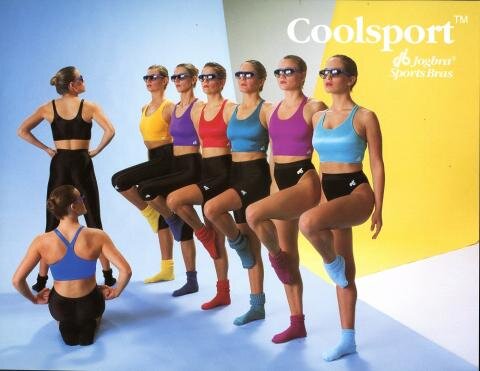
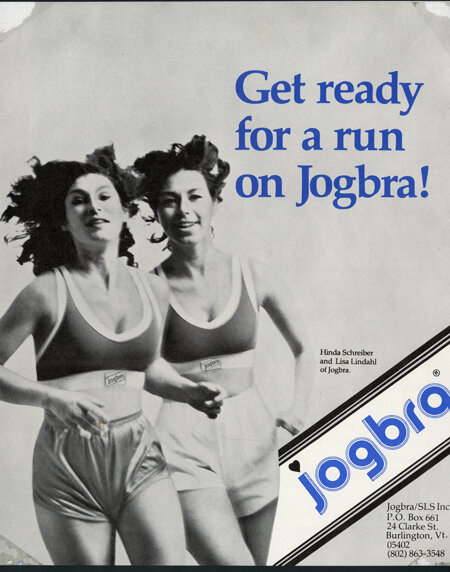
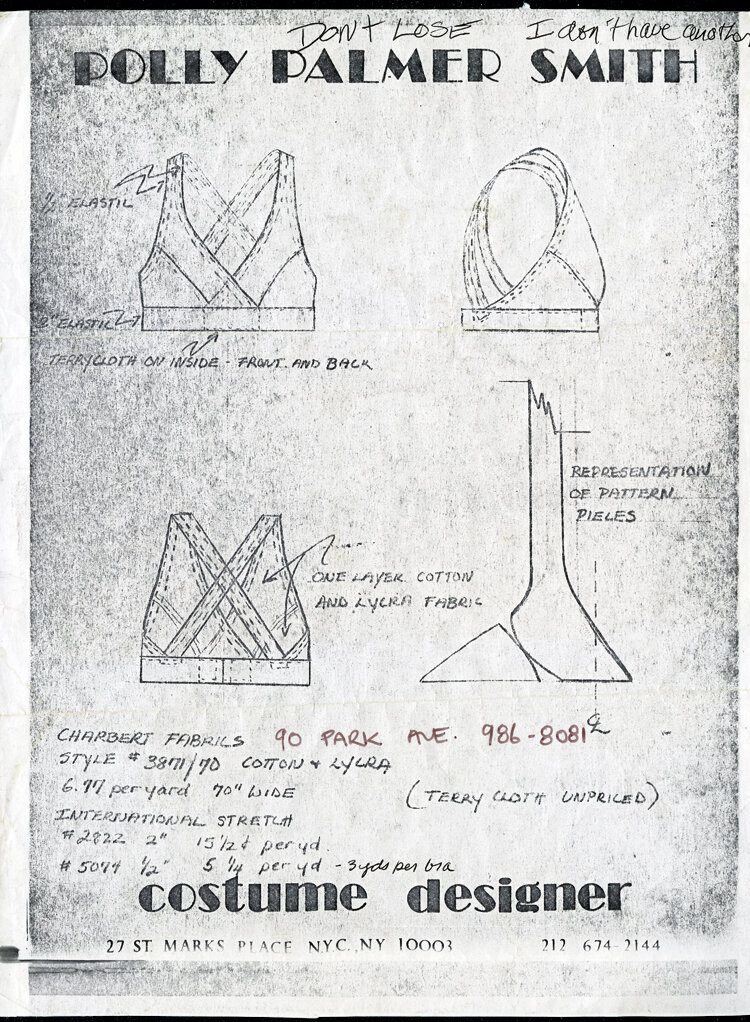
And there you have it...a time traveling look at the evolution of the bra. They’ve cinched in, flattened down, and lifted up in equal measure. They’ve allowed breast-bearing ladies freedom, too. So, as the Marvelous Mrs. Maisel might say, “tits up!”
All music provided by Storyblocks.com and Archive.org. Voiceovers courtesy of John Armstrong and Paul Gablonski.

